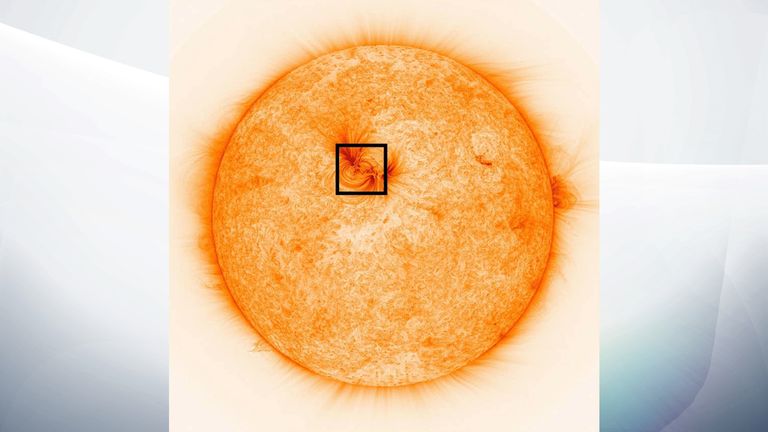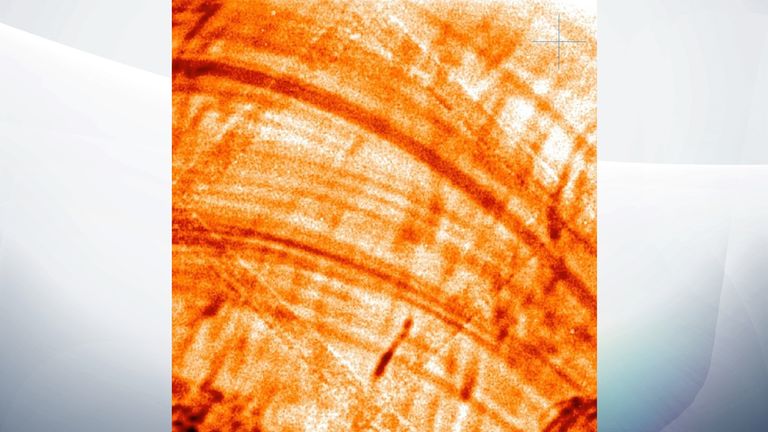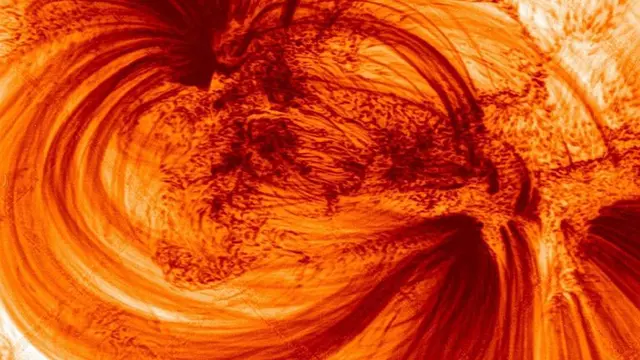The highest-ever resolution images of the sun have been revealed by British scientists working alongside NASA researchers.
The images analysed by a team from the University of Central Lancashire (UCLan) and NASA offer astronomers insights into the sun's atmosphere.
Before the images were released, aspects of the sun's atmosphere were a mystery - appearing dark or mostly empty.

Image:The individual strands are up to 500km thick. Pic: UCLan
But now scientists have discovered these spots actually contain strands of incredibly hot electrified gas - strands that are individually up to 500km (311 miles) thick.
The images were captured by NASA's high-resolution coronal imager (Hi-C), a telescope which was carried to the cusp of space on a sub-orbital rocket flight.
Being ultra-sharp, the telescope is able to identify structures in the sun's atmosphere as small as 70km (43 miles), or about 0.01% of its total size.
Despite knowing these strands exist, scientists are still puzzling over what exactly is creating them.
Why they are formed in the sun's atmosphere and how their presence helps us understand the eruption of solar flares and solar storms which could affect life on Earth are subjects of ongoing debate.
Professor Robert Walsh, professor of solar physics at UCLan, said the images provide an "ultra-high definition" glimpse of the our solar system's star for the first time.
Image:The pictures are the clearest ever of the sun. Pic: UCLan
"Until now, solar astronomers have effectively been viewing our closest star in 'standard definition', whereas the exceptional quality of the data provided by the Hi-C telescope allows us to survey a patch of the sun in 'ultra-high definition' for the first time," he said.
"Think of it like this: if you are watching a football match on television in standard definition, the football pitch looks green and uniform," Prof Walsh said.
"Watch the same game in ultra-HD and the individual blades of grass can jump out at you - and that's what we're able to see with the Hi-C images. We are catching sight of the constituent parts that make up the atmosphere of the star."

Image:The telescope took the images on a rocket ship. Pic: UCLAn
Dr Tom Williams, a postdoctoral researcher at UCLan who worked on the Hi-C data, said the images help provide a greater understanding of how the Earth and sun related to each other.
"This is a fascinating discovery that could better inform our understanding of the flow of energy through the layers of the sun and eventually down to Earth itself," he said.
"This is so important if we are to model and predict the behaviour of our life-giving star."
 简体中文
简体中文





